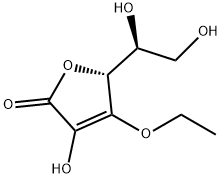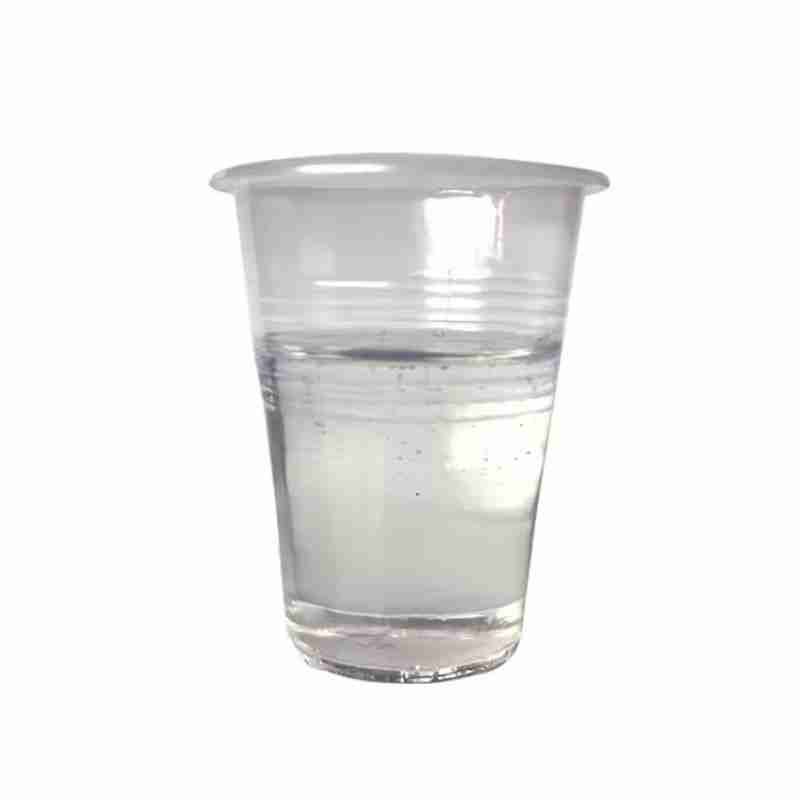3-O-Ethyl-L-ascorbic acid CAS#86404-04-8
3-O-Ethyl ascorbic acid ether, also called VC ethyl ether, is an ascorbic acid derivative. Ascorbic acid is a naturally occurring antioxidant and free radical scavenger, a reducing agent in the conversion process of biological enzymes, and has a preventive effect on some chronic diseases (cancer, diabetes and allergic skin diseases). From the molecular structure of ascorbic acid, it can be seen that compared to the 2-position enol hydroxyl group, the 3-position enol hydroxyl group has higher activity on electrophiles, and it is the product of 3-O-alkylation during O-alkylation modification. Mainly. 3-O-Ethyl ascorbate ether is a product of ascorbic acid-3-O-ethylation. It has a simple molecular structure and is easily absorbed by the skin. After entering the dermis through the stratum corneum of the skin, it is easily decomposed by the biological enzymes in the human body. The effect of ascorbic acid effectively solves the fat solubility problem of ascorbic acid, and is widely used in cosmetics as a whitening agent and antioxidant.
发送询盘
3-O-Ethyl-L-ascorbic acid CAS#86404-04-8
| 3-O-Ethyl-L-ascorbic acid Basic information |
| Product Name: | 3-O-Ethyl-L-ascorbic acid |
| Synonyms: | 3-O-Ethyl-L-ascorbic Acid;3-o-ethyl-l-ascorbic acid;3-O-ETHYLASCORBICACID;(5R,1’S)-5-(1,2-Dihydroxy-ethyl)-4-ethoxy-3-hydroxy-5H-furan-2-one;(5R)-5-(1,2-dihydroxyethyl)-4-ethoxy-3-hydroxy-2,5-dihydrofuran-2-one;(5R)-5-[(1S)-1,2-dihydroxyethyl]-4-ethoxy-3-hydroxyfuran-2(5H)-one (non-preferred naMe);3-O-Ethyl vitaMin C ester;Only VCE |
| CAS: | 86404-04-8 |
| MF: | C8H12O6 |
| MW: | 204.18 |
| EINECS: | 617-849-3 |
| Product Categories: | Vitamine C derivative;API;86404-04-8 |
| Mol File: | 86404-04-8.mol |
 |
|
| 3-O-Ethyl-L-ascorbic acid Chemical Properties |
| Melting point | 112.0 to 116.0 ??C |
| Boiling point | 551.5??50.0 ??C(Predicted) |
| density | 1.46??0.1 g/cm3(Predicted) |
| vapor pressure | 0-0Pa at 20-25?? |
| storage temp. | Sealed in dry,2-8??C |
| solubility | Methanol (Slightly), Water (Slightly) |
| pka | 8.89??0.40(Predicted) |
| form | Solid |
| color | White to Off-White |
| InChI | InChI=1S/C8H12O6/c1-2-13-7-5(11)8(12)14-6(7)4(10)3-9/h4,6,9-11H,2-3H2,1H3/t4-,6+/m0/s1 |
| InChIKey | ZGSCRDSBTNQPMS-UJURSFKZSA-N |
| SMILES | O(CC)C1=C(O)C(=O)O[C@@H]1[C@H](CO)O |
| LogP | -0.8–0.64 at 20-25?? and pH7 |
| Surface tension | 69-72.4mN/m at 1g/L and 20?? |
| Safety Information |
| HS Code | 2936.27.0000 |
- 2
- 2-diallylpent-4-en-1-amine
- 4
- 95-16-9
- Ammonium sulfamate
- Benzothiazole
- cas:67889-00-3ح2
- cas:83524-75-8 | pigment black 32
- cas:928836-00-4 | 2
- cas:932745-70-5 | 4
- Chemical Minerals
- Coconut diethanolamide
- Daily Chemicals
- discount
- for sale
- General pvc resin
- hexyl D-glucoside
- in stock
- Lauramidopropyl betaine
- LAURIC ACID MONOETHANOLAMIDE
- Petroleum Additives
- Plasticiser
- Ploymers
- price
- PVC
- quotation
- Raw Materal
- Remove term: Petroleum Additives Petroleum Additive
- SODIUM ETHYL 2-SULFOLAURATE
Related Products
Octyl 4-methoxycinnamate, scientifically known as 2-Ethylhexyl 4-Methoxycinnamate, is a highly effective organic UV filter commonly used in the formulation of sunscreens and cosmetic products. This compound is renowned for its ability to absorb ultraviolet B (UVB) radiation, providing a reliable defense against the sun’s harmful effects on the skin.
Characterized by its chemical formula C19H28O3, Octyl 4-methoxycinnamate is a liquid ester that is readily soluble in organic solvents. It is valued for its photostability, which means it maintains its protective properties even after prolonged exposure to sunlight. This feature makes it an ideal ingredient for products designed to offer long-lasting sun protection.
In addition to its UVB absorption capabilities, Octyl 4-methoxycinnamate is also appreciated for its compatibility with other UV filters, allowing for the creation of broad-spectrum sunscreens. It contributes to the development of formulations that are non-greasy and cosmetically elegant, suitable for a variety of skin types.
As a key component in sun care products, Octyl 4-methoxycinnamate supports the skin’s health by preventing sunburn, reducing the risk of skin cancer, and delaying the signs of photoaging. Its safety profile and efficacy make it a preferred choice in the personal care and dermatological industries for sun protection solutions.
Common English name: 5-iodo-2,3-dihydropyridazin-3-one
CAS No.: 825633-94-1
Molecular formula: C4H3IN2O
Molecular weight: 221.98
Sample: Available
Benzothiazoles are a class of chemical compounds characterized by a fused benzene and thiazole ring. They exhibit a broad spectrum of applications, particularly as antioxidants in rubber and plastic industries, enhancing product longevity and performance. Additionally, benzothiazoles serve as key intermediates in the synthesis of pharmaceuticals, contributing to the development of life-saving drugs. Recognized for their stability and reactivity, these compounds are integral to advancing material science and healthcare solutions.
Octocrylene is an organic compound widely recognized for its potent UV-filtering properties, making it an essential ingredient in sunscreens and other skincare products designed to protect the skin from harmful ultraviolet radiation. With the chemical name 2-(4-Methylbenzyl)-2H-benzotriazole-5-methyl, octocrylene is a stable and photostable molecule that provides broad-spectrum protection against both UVA and UVB rays.
This oil-soluble chemical is valued for its ability to absorb UV radiation effectively, converting it into heat without causing skin irritation or staining clothes. Octocrylene is often used in combination with other UV filters to enhance the sun protection factor (SPF) of formulations, ensuring a balanced and comprehensive defense against sun damage.
As a lipophilic compound, octocrylene is compatible with various cosmetic and dermatological formulations, contributing to the development of lightweight, non-greasy sunscreens. Its chemical structure allows for a high degree of safety and efficacy, making it suitable for a wide range of skin types, including sensitive skin.
In summary, octocrylene is a reliable and efficient UV filter, pivotal in the formulation of modern sunscreens that offer advanced protection against the sun’s harmful effects while maintaining skin comfort and product aesthetics.
Chemical Name: Zinc citrate
Synonyms: Zinc citrate trihydrate
CAS No.: 546-46-3
Molecular Formula: C6H8O7Zn
Molecular Weight: 257.5
Appearance: White powder
Succinimide is a heterocyclic organic compound and an important industrial chemical. It serves as a key intermediate in the synthesis of various pharmaceuticals, agrochemicals, and other specialty chemicals. Known for its reactivity and versatility, succinimide is widely used in the production of succinic anhydride, a precursor to many polymers and plasticizers, highlighting its significance in the chemical industry.
Polyhexamethylene guanidine hydrochloride, often abbreviated as PHMG-HCl, is a high molecular weight polymeric biguanide compound known for its potent antimicrobial properties. With a chemical structure that features a long chain of methylene groups bridged by guanidine units, PHMG-HCl is effective against a broad spectrum of microorganisms, including bacteria, viruses, and fungi.
This hydrochloride salt form of PHMG is highly soluble in water and is commonly used in various applications due to its non-irritant and non-toxic nature to human skin and mucous membranes. It is widely recognized for its ability to form a colorless and odorless solution, making it an ideal choice for use in personal care products, medical disinfectants, and water treatment processes.
The versatility of PHMG-HCl lies in its cationic nature, which allows it to bind to negatively charged microbial cell walls, disrupting their integrity and leading to cell death. This mechanism of action contributes to its effectiveness as a preservative and disinfectant. Moreover, its substantivity, or the ability to adhere to surfaces, enhances its long-lasting antimicrobial activity.
In summary, Polyhexamethylene guanidine hydrochloride is a reliable and efficient antimicrobial agent, pivotal in industries where hygiene and cleanliness are paramount, offering a safe and sustainable solution for microbial control.
Chemical Name: Ammonium Iron(II) Sulfate
Synonyms: Diammonium iron bis(sulphate); iron (ii) ammonium sulfate
CAS No.: 10045-89-3
Molecular Formula: FeH5NO4S
Molecular Weight: 170.95
Chemical Name: Dehydrocholic acid
Synonyms: Acide dehydrocholique; Triketocholanic acid
CAS No.: 81-23-2
Molecular Formula: C24H34O5
Molecular Weight: 402.53
Appearance: Powder
Silicones are a family of synthetic polymers known for their versatility and stability. They are heat-resistant, non-toxic, and have excellent electrical insulation properties. Commonly used in various industries such as construction, automotive, aerospace, and personal care products, silicones offer a wide range of applications from sealants and adhesives to lubricants and medical devices. Their resistance to extreme temperatures and weathering makes them a preferred choice for many high-performance applications.
1-Octanol, also known as Capryl alcohol or n-Octanol, is a clear, colorless liquid with a characteristic waxy odor. It is an alcohol with eight carbon atoms in its chain, making it a part of the aliphatic alcohol family. This compound is poorly soluble in water but is miscible with ethanol, diethyl ether, and chloroform . It has a melting point of approximately -15??C and a boiling point of around 196??C . 1-Octanol is used in the production of esters, plasticizers, and as a solvent or intermediate in the synthesis of various organic compounds. It also finds application in the fragrance industry as a fixative in perfumes and can be used in the formulation of flavor and scent compositions . It is important to note that 1-Octanol is flammable and should be handled with care, storing it away from sources of ignition and heat .
Chemical Name: Ashwagandha Extract
Synonyms: Withania somnifera, ext.; Withania Somnefera Extract
CAS: 90147-43-6
Appearance: Brown



















